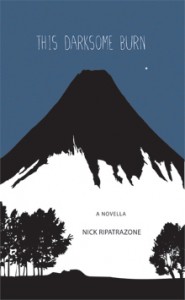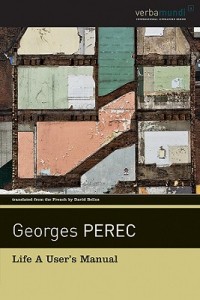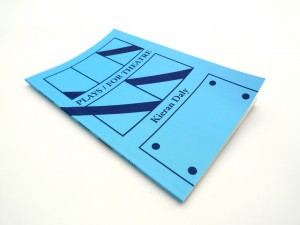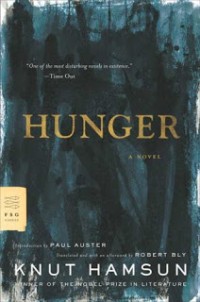This Darksome Burn by Nick Ripatrazone
 This Darksome Burn
This Darksome Burn
by Nick Ripatrazone
firthFORTH, Forthcoming October 2013
66 pages / More Information
Myth: “This Darksome Burn is a fierce rendition of nature’s obstinate force. Indeed, for one man, toughness and tenacity provide no match for the unpredictable wilderness of the shadowing Siskiyou mountain or his own bereft emotional frontier.” [1]
It’s partially true: Nick Ripatrazone’s new novella begins with Luke camped out in the woods, hunted by a pack of wolves. He has to let his horse free so the wolves will follow it instead of him. When he gets home, tragedy has occurred. He traipses through wailing snow to find the man that raped his daughter, shotgun in hand. Even the cover of the book is a great volcano-like mountain, rising foreboding and dark against the night sky. The wilderness is This Darksome Burn’s setting, as billed. But the really valuable work of the novella is in the juxtaposition between Luke’s “toughness and tenacity” and something less wild: not “his own bereft emotional frontier,” exactly, but the demands of a modern world on a man who has most of his life relied on reticence and grit, virtues of a time that has gone.
It becomes clear, as the novella goes on, that Luke’s wife has died, leaving him in charge of his teenage daughter Aurea and his younger son Ford. Luke knows that he is unequipped. When his daughter is sexually assaulted, all he can think to do is nearly kill the man who has done it, then keep Aurea on house arrest indefinitely. Her concerns are more complicated:
Luke tells Aurea that she still has time. “To tell the police everything.”
“I’m not going to.”
“You protect that bastard. Do you love him?”
“I hate him.”
“Then do it.”
“I’m trying to forget about him.” Aurea closes her hand around Luke’s and looks to the porch. “Can we not do this here?”
September 23rd, 2013 / 11:05 am
Unconstrained Review of Perec’s LIFE A USER’S MANUAL
 Life: A User’s Manual
Life: A User’s Manual
by Georges Perec
Translated by David Bellos
David R Godine, 2008
685 pages / $22.95 Buy from Amazon
We were briefly offered one possible way out of the overwhelming Order that was being brandished against us: Writing, they said, could become like a kind of a game, in which the rules are made transparent, the walls clearly delineated, all objects in their proper places, the experience of reading itself an observation of the established rules left to frustrate all possible variables against themselves for the length of a poem, a story, a book. She bemoaned her loneliness, felt estranged by her intelligence, but would also brag, gripe, brag, about the capacities given unto her by her remarkable talent for finding her way around a party, the geometry of pleasing arraignment, a kid genius of the light touch, claiming she knew what to give people to make them happy, to make them like her, cried, felt lonely, spent time in and out of centers for people like her, realized that she was already older than she had thought she would be while all this was still going on for her. None of that without some grounding in truth. A little like following thirty steps of penned directions, winding up in the wrong place, and only looking toward the last step as the source of any possible error. ‘Move like a knight does.’ Couldn’t bear to be around people as bright as her, unless it was one other man. A very slow, considered move across the exposed side of a Parisian flat, moving like a knight does, in a moment that we have to assume is the only possible moment it could be written, no abutting moment qualifies, the fullest instance of a tableau, thereby, for the time being, abstracting death, in that it has ceased to approach. The quiddity of death is in its unceasing approach. Already, we are fighting an uphill battle.
Perec, Calvino, Queneau, others: Oulipians. Calvino’s Invisible Cities: One of those few books that ‘everyone loves’. Calvino: Also well-known for Cosmicomics, similarly well-loved. Those two books comprise the lasting popular of Oulipo. Queneau: Exercises in Style, a book, which, ‘it is good that they exist’, but God forbid anyone ever actually have to read it. He is cellmates with Sol LeWitt. Calvino: Whimsical (Márquez), sexually precious (Pasolini), transparently formal (Coover), with privileged access to some elemental quality of ‘the story’ (Borges). Similarly unconcerned with death—or, at least, a death that whatsoever resembles the death that awaits us poor, existent informalities. Leery of, but on the whole grateful for, him and his place in every bookshelf. Occasional shrugging permitted. People whom we had thought were our friends accused us of creating materials that the bored leisure class could use to occupy the time between now & the timelessness. Some of us responded by creating very detailed wallpaper, apparently.
Out of this, Life A User’s Manual. The most possible observation of the materials that are drawn into the orbit of a life lived, as little possible observation of what it is all these things are to act as a totem against for the persons that acted as gravity wells. For us, the limited but monstrous expansion of the gap between two instants. The first few belayed momentums, in which Perec begins to draw a line and then ceases to draw a line, produce what is best described as the literary equivalent of the phenomenon of ‘learned helplessness’, viz. if one tries something enough times, only to be rebuffed every single time, they will cease trying, will lie down, will lie there. We begin to follow a story’s arc, it is interrupted, perhaps it will be resolved in 600 pages. If it is not, I will certainly not remember which stories were not led nowhere no one saying nohow on, though I take diligent notes, though how on is never complicated. I slip into a pleasant coma. I read more quickly than usual. The music box, yes. The dusty globe, yes. What does death matter? Someone’s uncle had an adventure, once. I am being lied to, I am not being lied to, I cease desiring to rise to the occasion of questioning. Periodic conceptual synchronicities between seemingly disparate entities, as well as immediately attractive prospects (the blanking of a puzzle piece, the forged document, a mistaken identity, a murder mystery concerning a telephone), turn my anesthetized stupor into a mildly giddy audienceship. When someone is ‘poor’, it means that their clothes are rakish or their history a little more multifarious. When someone is a ‘servant’, it means that they are in a different room, or are in a different position in the same room. The thought of the form occasionally recurs, discourages active imagination. The thought of attempting to work out ‘where one is’ or ‘how far is left to go’ is indescribably unattractive.
September 23rd, 2013 / 11:00 am
Sunday Service: Mitch Grabois poem
Japan
I walked into the water and started swimming
I thought I would swim forever
My wish was to swim to Japan
and eat fish that contains deadly toxins
unless it is scrupulously prepared
and then visit the Buddhist temples
to bow down at a family shrine at the side of the road
to eat rice with the family
But I felt myself sinking
I don’t know how he got there
My sister’s boyfriend threw a carry on me
His hand massaged my breast as he towed me
It was unpleasant
but it was foreplay
so it was compulsory
I knew all about compulsory
from my Olympic training
He dragged me onto the sand
Each grain of sand was a finely honed razor
I already knew that the world was made of razors
If you explored the molecular structure of anything
you discovered it was made of razors
My brain is made of a billion razors
Each neuron is a razor
Each synapse is a strop
I wanted to scream at my sister’s boyfriend:
Why are you torturing me?
but couldn’t get any words out
He gave me mouth-to-mouth
I thought that meant we were married
without violence
I sat up and vomited in the sand
My sister came over with a child’s shovel and covered it up
The shovel was bright green
It turned into a mystical frog
and squirmed in her hands
She shrieked and dropped it
The mystical frog peed in the sand
and froze everything for eternity
Mitch Grabois was born in the Bronx and now lives in Denver. His short fiction and poetry appear (or will appear) in over one-hundred literary magazines, most recently The T.J. Eckleberg Review, The Examined Life, Memoir Journal, Out of Our and The Blue Hour. His novel, Two-Headed Dog, published by Xavier Vargas E-ditions, is available for all e-readers for 99 cents through Amazon, Barnes and Noble and Smashwords (which also provides downloads to PC’s).
“Here, the obsolete game-as-medium lights its fires with the levity of camp. Its “new aesthetic” texture makes a tragicomic figure for contemporary poetry: an anachronistic genre of gaming while Rome burns—or dreaming Rome might burn, while in fact the empire goes on using stuff up outside as usual, pleasant or painful, awful but cheerful, the deflector shield quite operational when your friends arrive.” — David Gorin at the Boston Review considers the perverse negativity of those crud-ducks over at Claudius App, whose reading this Saturday 9/21 @ 9PM @ Reena Spaulings with Geoffrey G. O’Brien, Ariana Reines, and Keston Sutherland
you should definitely avoid, because just look at this animated GIF below they made for it that links directly to the Facebook event, which supposedly 118 people are going to, and look, I’ve been to Brooklyn, 118 people don’t even live in that pie shop, so, yeah, sure, keep murdering your brother, Claudius, it’s not like we don’t all know he’s the real king, and it’s not like we’re not going to keep putting slippers on your hands so you rub your eyes with your slippers when you wake up:
….even if you don’t help them give birth to Lenses (“a messy, caustic bunch. Inherently unclean, fibrillating, picking, shifting in and out of dark rooms”) you should definitely check out Jake and Barrett’s creepy, unnerving video
(click here)
Stories Keep Us Warm: How an innovative reading series is firing up the Seattle literary scene
I was recently chosen to perform my story “Trigger” for The Furnace, a Seattle series where one prose writer is invited to read a single piece to completion. The writer performs their piece in front of a live audience, which is simultaneously broadcast over Hollow Earth Radio. By focusing on one writer (rather than several brief readings by multiple people), the series takes a risk in that it really relies on that single person to create a compelling performance and single-handedly drive attendance. What results from that risk is an always interesting, kinda weird, and truly unique listening experience. It also provides a beautiful showcase for the writer and their work, giving them a chance to explore alternative presentation styles—using actors, live musicians, sound effects and other elements to enrich the reading. With its radio broadcast, the series taps into older forms of storytelling by bringing people together to listen, either online or in person (herding us literary cats, in a way). From The Furnace mission statement: “Stories were told around a fire. They kept us warm and created a sense of connection and community.”
It’s really a kind of magical experience to both listen and perform at The Furnace. The Hollow Earth Space is small, but reads as warm and intimate, rather than cramped. And, as a reader, it was cool to know people were listening over the airwaves—friends of mine texted after the reading was done, congratulating me. There have only been five performances so far (which you can listen to on Soundcloud and The Furnace website), but the series has already gained a big following, and been a featured event in the local alternative weekly The Stranger many times. It’s been cool to see a relatively small, but pretty original idea build its audience and reputation in such a short amount of time.
To learn more about how the series got started, and what goes into putting it together, I had a little Q&A with the founder, Corinne Manning. Here’s our conversation:
***

LJH: So can you tell me more about what inspired you to start the series?
CM: As a prose writer it’s often tricky to participate in readings because I’ll have about ten minutes and that means usually cutting a story down, or just reading the first bit–where as ten minutes for a poet means something very different. I wanted to create a series that gave a prose writer the opportunity to read a piece all of the way through, and even get to explore presenting it in innovative ways. The chapbook that’s made for each event and the fact that its broadcast on Hollow Earth Radio is all part of trying to make a disparate literary community feel more cohesive, create a holistic listening experience for the audience member, and also give a writer a real chance to be showcased beyond the ephemeral reading.
LJH: How happy have you been with it so far? Have there been any challenges?
CM: I ran a series with multiple readers before (Other Means in Brooklyn, NY), and though I loved the format of that series and the intention, I’m much happier with the Furnace. There are some really obvious ways in which it’s easier than what I was doing before: it’s quarterly, there’s only one writer to schedule, and because that writer gets showcased in a really special way they take it seriously in a way that I hadn’t witnessed before. My co-coordinator Anca Szilagyi and I have always been lucky to get a really good crowd, which is really exciting because we purposefully try to showcase people who are emerging or who aren’t one of the same eight or so people featuring again and again.
LJH: Thinking more about readings, I’m wondering if you could describe the qualities that you think makes for a great listener experience. Like what makes you go: “Wow, I’m really glad I went to that.”
CM: This is like defining the mystery of the universe! There’s an essay by Frank Conroy where he talks about the relationship between the writer and the reader in a piece of fiction as this collaboration, where both the writer and the reader are putting a certain kind of energy in to make the story happen. The writer, he says, has to put in a little extra work to create space for the reader’s energy to fill the story. Esoteric, I know but I think the same thing happens at a reading. The writer who is performing is engaged in the act of telling the story—and is in a sense performing it. The listeners then too, should want to be there, are more engaged in receiving than just waiting for their friend to be the one who comes up on stage.
September 20th, 2013 / 11:00 am
Plays/For Theatre by Kieran Daly
 Plays/For Theatre
Plays/For Theatre
by Kieran Daly
bas – books, 2011
44 pages / $10 Buy from bas – books
The genius of the plays in Plays/For Theatre is that they offer almost nothing of anything you’d expect from any kind of play. There are some precedents here in Stein and Beckett in their starkness and refusal, but Daly’s plays inhabit a kind of literalism that avoids both the wordplay of Stein and the ghostly psychodrama of Beckett’s shorter works, even Breath, in which the lights rise to the sound of an inhalation and lower to the sound of an exhalation.
Daly’s work is even more spare than that, usually absent of any kind of staging or even characters unless generic actors are referred to peripherally. What you get instead with Daly’s work is him stretching the form of the play so hard over content completely unsuited to drama that it eventually becomes tough to even read the plays as plays. They’re more like the cadavers of plays, taken out of cold storage for study by students not of the theatre but of a kind of literalism that would make even nouvelle roman writers blush.
Take, for example, the play Gender Trouble by Judith Butler: a Play in its entirety, lack of italics (sic):
ACT.
[Entire text of Gender Trouble by Judith Butler.]
SCENE.
Gender Trouble.
SCENE.
Gender Trouble by Judith Butler. Published 1990.
ACT.
The book Gender Trouble by Judith Butler.
And that’s all you get. The book is dramatized, but not by being reworked through character and setting, but simply by being placed as an object within the form of a play. Most of the plays in Plays/for Theatre behave this way; there are plays about corners, windows, A Thousand Plateaus, numbers, and Law and Order: Special Victims Unit (Season Five) among other things. And while Daly works subtle variations into his presentations, the forthright literalism remains intact. The play about a window is literally that and nothing else.
September 20th, 2013 / 11:00 am
Of critical theory
Forty years ago Harold Rosenberg said “art in our time cannot escape having a political content and moral implications. Criticism that is unaware of this is fatally poverty-stricken.” Today you can look for critical theory behind cans of soup at the supermarket. You can find it in your apartment, or in your home. Maybe your pool, if you have a pool. Your cat can teach you critical theory. Your dog is chasing a squirrel. There’s a lesson here somewhere, everywhere. Even at the corner store. Not in the trees. The trees can’t tell you about critical theory, but the wind can. You don’t need a sense of humor to know it’s raining a lot. Look around. Better yet, look at yourself. Harder. Look harder and deeper at yourself. And see that you are just an it. Critical theory is the space between things. There are books entirely on this lack of space. More books all the time more books on theory. Eat. But you don’t need to read the books. You just need to pay attention to them. Let them envelop the you that you thought you were in rust. Give yourself to them, and you will find that you weren’t really. But they are and they aren’t. And it’s never enough to think that you know, because you don’t. All there is is an idea of something between the things, spreading them out, making them whole. A ghost. Find it in the penny fountain at the mall below the sun light crashing gently thru the atrium, so high above. It’s in the dust on the plants next to the food court, where the last sandwich artist makes too-hot coffee for the grandmas and the grandpas, stretching out their limbs like wet shirts hung over a dry line strung between two buildings within several larger buildings, waiting to learn what it’s like to be an idea in the mind of someone living without knowing they’re going to die.
25 Points: Hunger
 Hunger
Hunger
by Knut Hamsun
Farrar, Straus and Giroux, 2008
272 pages / $16.00 buy from Amazon
1. This is an article about Robert Bly’s (b. 1926) translation of Hunger by Knut Hamsun (b. 1859). It was published by FSG in 1967.
2. The cover graphic is the word HUNGER stylized as an open mouth with 2 rows of sharp teeth. I bought my copy in January 2013 from a used bookseller in Toronto. The clerk said it was her favorite book, esp this edition because she liked the cover. The design is not credited in the edition notice.
3. Knut Hamsun is clean shaven and wearing a monocle in a photograph taken in 1890, the year Hunger was first published in Norway. In later photographs he is moustachioed and wears glasses. In the last known photographs of Hamsun he wears a large white beard and squints.
4. The first several times I read Hunger by Knut Hamsun was in a hardcover edition translated by George Egerton aka Mary Chavelita Dunne in 1899. This review is not about that translation, nor is it about the 1996 translation by Sverre Lyngstad.
I am descended from Norwegians but know nothing of the language. This article is not as much a review of the translation itself as it is a discussion of the fact of its publication in 1967.
5. The main introductory essay to Bly’s translation is by Isaac Bashevis Singer (b. 1902) noted Jewish-American author and pioneer of modern Yiddish literature.
“Writers who are truly original do not set out to fabricate new forms of expression,” says Singer, “or to invent themes merely for the sake of appearing new. They attain their originality through extraordinary sincerity.”
6. “People do not love alike, neither do they starve alike.” (Singer).
7. Hunger is about a young man with artistic leanings living in Kristiania, Norway. From biographical details about Hamsun we can guess that the story is based on Hamsun’s own experiences and takes place in in 1879-80.
Hunger itself does not offer much in the way of context. It is a first person account of a young man living alone in a city. He appears to have no awareness of anything outside his own need, which is mostly for food. He is starving and desperate, but the private code by which he lives forbids him from taking work that he considers to be below his abilities.
8. His mental state throughout is ostensibly a result of his being hungry, rather than a symptom of mental illness or PTSD for example. He cycles rapidly through extreme moods: hilarity, despondency, optimism, despair, loneliness, social anxiety etc.
9. Doubt is the driving force behind the narrator’s racing thoughts. His doubt tirelessly regenerates itself. Doubt is what drives the desperation and sets its parameters. It is what keeps need always at the centre.
At every moment he is like a reckless gambler who has already placed his bet before realizing the stakes are too high, and then in a panic must cut his losses before waiting to see the outcome.
“He was a man before his time,” says Singer, “His skepticism, or perhaps it could be called pyrrhonism — doubting even the doubts — belonged to a later era. To Hamsun man was nothing but a chain of moods that kept constantly changing, often without a trace of consistency.”
10. “Fictional heroes who are estranged from their environment seldom emerge lifelike,” says Singer, “With most writers, such heroes are mere shadows, or, at best, symbols. But Hamsun is able to portray both the environment and the alienation, the soil and the extirpation. His heroes have roots even though they cannot be seen.”
There is almost no historical or social/political context in Hunger. In most novels of the era that would be seen as a fault. In Hunger it is seen as a strength.
As a reader I only interact with the narrator’s environment as needed. That is because the novel is not about Norway or Europe: it is about being hungry. READ MORE >
September 19th, 2013 / 2:53 pm



